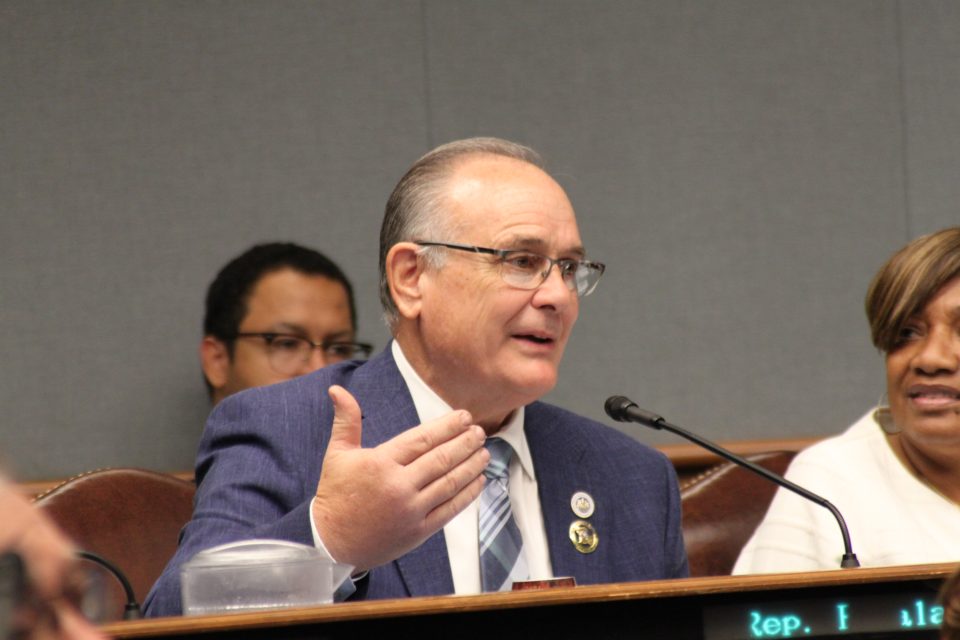
Timothy George Prejean
December 20, 2022
Thibodaux Chamber of Commerce to host 56th Annual Banquet
December 20, 2022On Monday, the Louisiana Coastal Protection and Restoration Authority (CPRA) received approval of permits and permissions to build and operate the Mid-Barataria Sediment Diversion from the U.S. Army Corps of Engineers (USACE). This major milestone completes USACE’s extensive permitting process for the project.
“Today is a monumental day for the state of Louisiana,” said Gov. John Bel Edwards. “The Mid-Barataria Sediment Diversion is a first-of-its-kind environmental infrastructure project that will exist in our own backyard to serve areas experiencing some of the highest rates of land loss in the world. The project also represents a major step forward to restoring for injuries suffered by our coastal estuaries as a result of the Deepwater Horizon oil spill. Communities we feared could be removed from the map in 50 years will instead see thousands of acres of wetlands in the future that will provide them with natural and sustainable protection. I commend CPRA, USACE, and all other agencies involved for their leadership and diligence throughout this process, resulting in a truly robust analysis and science-based decision.”
The Mid-Barataria Sediment Diversion will utilize “engineering with nature” principles to re-establish a consistent flow of sediment and land building material from the Mississippi River into Barataria Basin. This basin is an area experiencing some of the highest rates of land loss in the world and is home to the estuary most impacted by the Deepwater Horizon oil spill.
Once operational, the project will have the ability to build and sustain up to 26,000 acres of wetlands that will support a stronger, more resilient estuary. These wetlands will provide increased storm surge protection for communities in southeast Louisiana and create healthier habitats for the wide variety of aquatic species and wildlife in the basin. Other benefits include a substantial economic stimulus to the surrounding communities during project construction.
“Today is the most important day in the history of our state’s coastal program and represents a turning point in the story of Louisiana’s coast,” said CPRA Chairman Chip Kline. “The greenlight on this project moves us closer to finally implementing a critical component of the solution to our land loss crisis that science has pointed us to for decades – using the land-building power of the Mississippi River to sustainably build and maintain land. It unlocks our ability to use every tool in the toolbox, making our approach to coastal restoration and protection efforts stronger, more effective, and more innovative than ever before.”
CPRA submitted an application to USACE for permits and permissions in 2016, initiating an extensive environmental review process to study and document the potential beneficial and adverse impacts that the Mid-Barataria Sediment Diversion may have on the surrounding environment. This analysis encompassed a thorough assessment of measures, from basin salinity patterns and land building potential to local economic benefits and construction noise levels. It also compared the benefits and impacts of building the project to several other alternatives that vary in project capacity and design, as well as basin conditions in the future without the project. The Environmental Impact Statement (EIS) was developed by USACE in coordination with several other federal and state agencies. A Draft EIS was available for public comment in March 2021, and a Final EIS was published in September 2022. USACE’s decision today is based on a comprehensive evaluation of the information and data collected throughout the environmental review process, including substantial public input.
“This validates the work of hundreds of the brightest engineers and scientists from across the world who developed a project informed by sound science. It also represents immense progress on a project that will drastically change the outlook of coastal Louisiana for the better,” said CPRA Executive Director Bren Haase. “Throughout this extensive process, CPRA remained committed to transparency and ensuring the public had access to meaningful information as it became available. We will continue working with communities, industries, and stakeholders to minimize or mitigate negative impacts in the short term while we build a cornerstone project that will protect and sustain them in perpetuity.”
CPRA has requested that project construction be funded using Deepwater Horizon oil spill settlement dollars that have been dedicated to restoring Louisiana’s coast. The Louisiana Trustee Implementation Group (LA TIG), the group of state and federal agencies responsible for overseeing and approving spending Louisiana’s oil spill settlement allocation, plans to publish a Record of Decision on funding for the project in early 2023. Barataria Basin, the project’s location and greatest beneficiary, is one of the areas most impacted by the Deepwater Horizon oil spill and subsequent response activities.
If funding is approved, CPRA anticipates beginning construction activities for both the project and mitigation measures in 2023.
For updates on the project, visit www.midbasin.coastal.la.gov.







